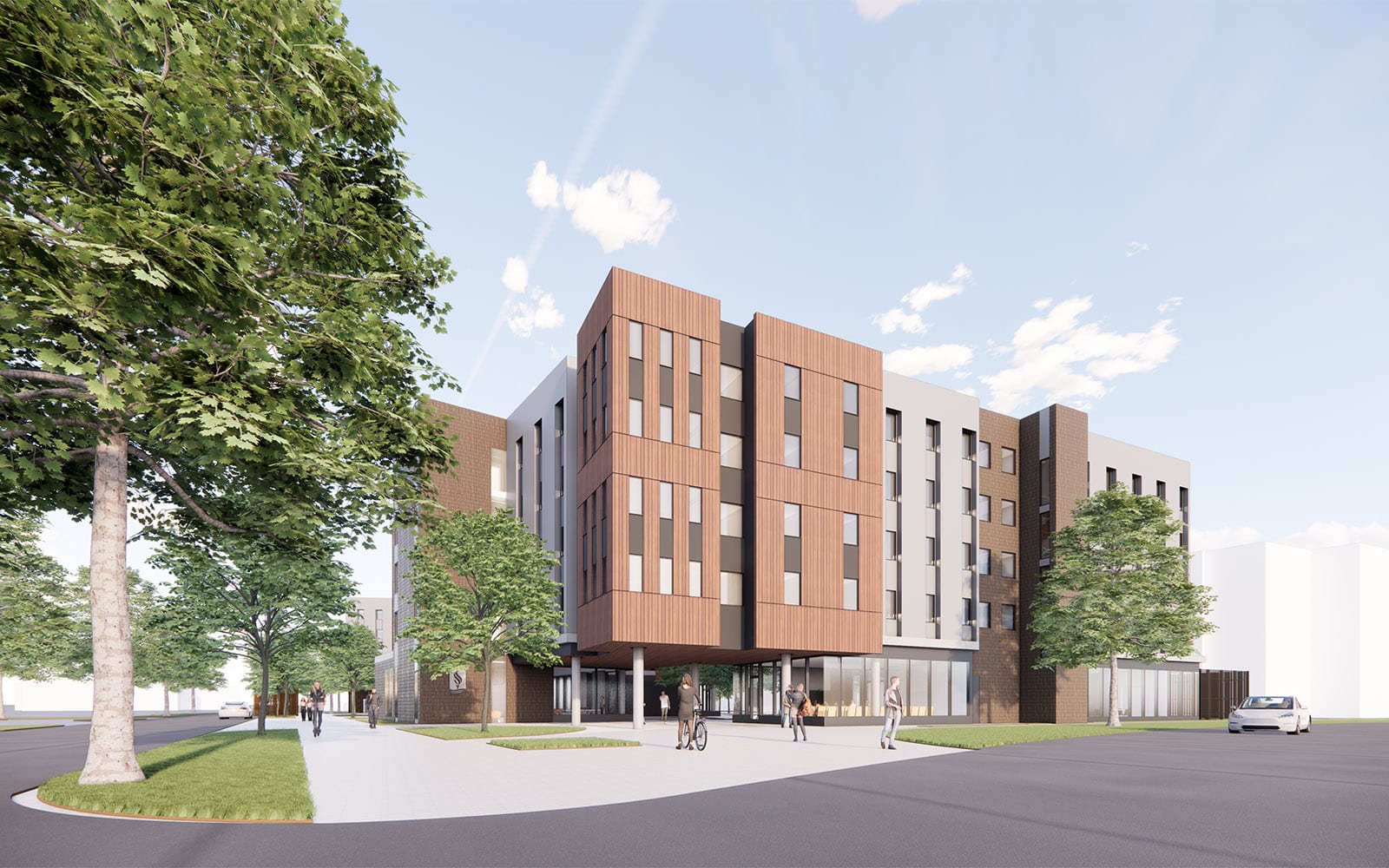|
|
Who’s up for a road trip? It takes about twelve hours to drive from Cal Poly Humboldt to San Diego State. Between these two points sit twenty-one other campuses that together make up the California State University (CSU) system—the largest public university system in the United States.
While Tania Nunez has yet to make the trek along the Golden State’s Pacific Coast Highway, she is visiting as many of these campuses as possible. After serving as Sacramento State’s director of planning, design, and construction, she stepped in as the CSU’s director of architecture and chief building official in 2024.
In her role, Nunez supports the successful delivery of capital projects and supports related needs at each campus. As the CSU educates more than 450,000 students each year, it’s a challenge and responsibility Nunez takes seriously. “We work hard because we know that even small projects impact the students. We want to create a sense of place and identity across the California State University’s campuses,” she says.

Like nearly all its counterparts across the nation, the CSU is bracing for the looming enrollment cliff in public education. Industry insiders expect college enrollment numbers to nosedive after 2025.
But California faces unique challenges of its own. Most CSU campuses have historically operated as commuter schools, attracting mostly local students from nearby community colleges. With the state facing a $68 billion deficit, there are rarely funds available for Nunez and her team to renovate, let alone plan transformational building projects.
Advertisement
Higher education spending represents the state’s third largest general fund expense, according to the Public Policy Institute of California. The University of California, California Community Colleges, and the California State University split just over $12 billion per year. That’s 12 percent of the state budget—a number that has declined consistently for 40 years. The CSU’s per-student state funds have dropped nearly a quarter since 1976, which has resulted in a spike in tuition.
The funding issue is the ever-present elephant in the corner of the classroom. However, as chancellors, presidents, and board members look for ways to attract students and mitigate plummeting enrollment numbers, they frequently request on-campus housing. It’s a classic catch-22.
“We want to create a sense of place and identity across the California State University’s campuses.”
Tania Nunez
Thus, Nunez and her team have been busy considering creative solutions. “When there’s so little available funding, the best avenue to bring new buildings to campus lies in unique delivery methods and creative partnerships,” she says.
One emerging method known as collaborative design build (CDB) has proven successful for CSU. In CDB, a blend of the Construction Manager at Risk and Design Build methods, the owner and design builder complete preconstruction documents in the early design phase while locking in plans and a guaranteed maximum price. The design builder, not the owner, has a contract with the architect. A phase two agreement guides the completion of design and construction.

The unique arrangement, Nunez says, balances risk and control for CSU. It also increases collaboration. “Another party owns more of the risk as we move into the phase two agreement, and everyone is working towards the same goal with a less adversarial relationship,” she explains. “It creates a pleasant environment where work can get done without endless change order negotiations.”
In 2021, during Nunez’s tenure at Sacramento State, the University celebrated the opening of Hornet Commons. The residence hall, developed in partnership with Greystar Real Estate Partners, features fully furnished apartment-style units and amenities like a swimming pool, fitness center, sports courts, and a clubhouse. Einstein Bros. Bagels rents retail space on the ground level.
To date, CSU has completed $4.5 billion worth of work using Collaborative Design Build. One of them was Parking Structure 5 at Sacramento State. “Prefabrication, paired with the Collaborative Design Build approach, was essential to the success of Parking Structure 5 on the Sacramento State campus,” says Aaron Alhady, general manager of design-build at Clark Pacific. “Collaborative communication and aligned goals among all stakeholders not only delivered on the University’s objectives for design and minimized campus impacts but also was the conduit to the project finishing ahead of schedule and on budget.”

Other solutions are on the table as well. Some campuses charge a nominal fee to ground lease land to partners who build, own, and operate facilities for decades before transferring them to the university. In other cases, developers coordinate with the university to allocate a certain number of beds in privately-owned buildings for a university to fill. Lastly, the CSU is exploring modular construction to expedite the building of housing units.
Nunez, who was born and raised in California, finds meaning in her contributions to CSU. She earned a specialized Bachelor of Architecture from the University of Southern California’s intensive five-year program and a master’s degree in historic preservation from Columbia University.
Her interest in historic preservation began at USC when she was tapped for the coveted Gamble House Scholar-in-Residence program. During this time, she and one other fifth-year student spent a year living in the famed Pasadena residence. Architects Charles and Henry Greene designed the expansive wooden home for David and Mary Gamble (of Procter & Gamble) in 1908. While some visit the Gamble House to view an American Arts & Crafts masterpiece, movie fans know it as Doc Brown’s home from the Back to the Future trilogy.
If Nunez had a DeLorean, she might go back to earlier decades to redirect the seemingly random campus expansion projects that came in spurts as funds became available. As it stands, she’s planning to allow each campus to retain its character while using consistent styles, methods, and materials to bring a distinct and cohesive look each of the CSU campuses. Her work will help the system evolve as universities increase research activities and campuses start to attract students from different regions.
“We want to create a sense of pride,” she says, “and what we’ve done so far is just the start.”
OUT OF STATE
While Nunez loves California and her current home in Sacramento, she’s also dedicated to foreign travel. The adventures she takes with her partner and children are designed to help them understand the lives, cultures, and experiences of others. At last count, the Nunez family had been to 20 US states and fifteen foreign countries.
This summer, they visited Colombia, but instead of rushing to Caribbean islands or picturesque colonial towns, they spent most of their time in Medellin. Leaders and residents have partnered to transform what was once known as the murder capital of the world into a safe, high-tech innovation hub.
“The youth helped change an entire city that now embraces hip-hop culture, street performance, graffiti and other forms of art,” Nunez says, adding that she hopes the visit inspired her kids to discover their own capacity to effect positive societal change.
For over 60 years, Clark Pacific has led the way in prefabricated building systems, combining innovative manufacturing with construction excellence to improve project outcomes and enhanced customer experiences. Our offsite construction approach reduces project risk through better cost and schedule certainty and greater supply chain controls without compromising a project’s overall design. We are committed to delivering energy-efficient, sustainable buildings that address our clients’ unique needs and make a positive impact on both the community and environment.


